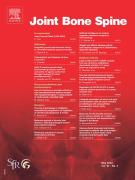Limb arteries involvement assessed by FDG/PET CT at diagnosis of giant cell arteritis and risk of relapse: An observational study - 01/10/24

Highlights |
• | Relapses occur in up to 50% of GCA patients. |
• | To stratify the treatment strategy on the risk of relapse is an unmeet need in GCA. |
• | FDG uptake in limb arteries at diagnosis is associated with relapse in newly diagnosed GCA. |
• | The value of FDG/PET CT for tailoring treatment in GCA patients needs to be further evaluated. |
Abstract |
Introduction |
Steroids and anti-IL6 biotherapy are highly effective in obtaining remission in patients with giant cell arteritis (GCA) but the risk of relapses remains high. We aimed to identify predictors of relapse in GCA.
Methods |
All consecutive patients admitted with a new diagnosis of GCA – according to the 2022 American College of Rheumatology/EULAR (ACR/EULAR) classification criteria – between May 2011 and May 2022 were eligible for this study. The primary outcome was the GCA relapse rate over the 36-months follow up. Factors associated with the primary outcome and time to first relapse were analyzed.
Results |
One hundred and eight patients (74 [69–81] years, 64.8% women) with a new diagnosis of GCA were studied. GCA was biopsy-proven in 65 (60.2%) cases. Ninety-eight (90.7%) FDG/PET CT scans performed at diagnosis were available for review. All patients received steroids given for 21.0 [18.0–28.5] months, associated with methotrexate (n=1, 0.9%) or tocilizumab (n=2, 1.9%). During a median follow-up of 27.5 [11.4–35.0] months, relapse occurred in 40 (37%) patients. Multivariable Cox regression model, including general signs, gender, aortic wall thickness, FDG uptake in arterial wall and IV steroid pulse as covariates, showed that both general signs (HR 2.0 [1.0–4.0, P<0.05) and FDG uptake in limb arteries (HR 2.7 [1.3–5.5], P<0.01) at diagnosis were associated with GCA relapse.
Conclusion |
FDG uptake in limb arteries at diagnosis is a predictor of relapse in newly diagnosed GCA.
Le texte complet de cet article est disponible en PDF.Keywords : Giant cell arteritis, Recurrence, Risk factors, Positron-emission tomography, Fluorodeoxyglucose, Axillary artery, Brachial artery, Iliac artery, Femoral artery
Plan
Vol 91 - N° 5
Article 105734- septembre 2024 Retour au numéroBienvenue sur EM-consulte, la référence des professionnels de santé.
L’accès au texte intégral de cet article nécessite un abonnement.
Déjà abonné à cette revue ?

